Best Lob Wedges 2025
We review the best lob wedges on the market so you can find the make and model that's perfect for your game
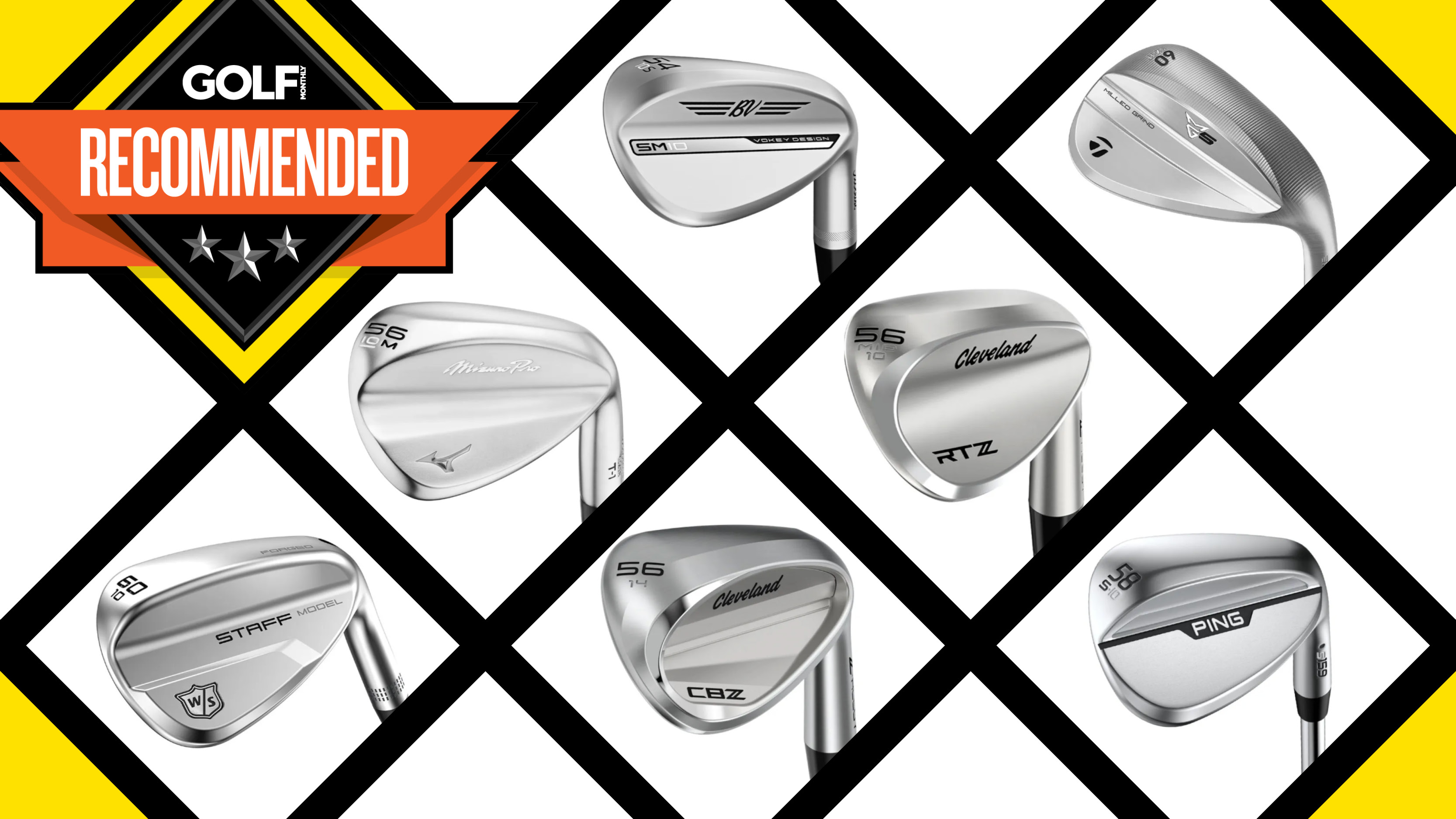

Wedges have to be versatile due to the different shots that have to be played around the green. One of those is the lob shot, which can be one of the hardest, but most satisfying shots, when pulled off correctly!
In this guide, we detail the best the market has to offer as you search for a lob wedge to fall in love with. To play that Phil Mickelson-style shot, one which sees the ball land like a butterfly with sore feet, requires no small amount of skill - as well as a club with lots of loft (typically 58°-64°). The best golf wedges don't just give you the power to play a crowd-pleasing flop, but with the spin it creates, this club offers you a lot of options around the green.
We've been busy testing the best lob wedges on the market to help you decide which one will suit your game, so be sure to read our full reviews to see how they performed. Some images below are for the 56° models, although these same wedges are available in higher lofts. For more wedge buying advice check out our other guides on other facets of the short game - such as the best wedges for chipping, the best sand wedges, or the best gap wedges.
The Quick List
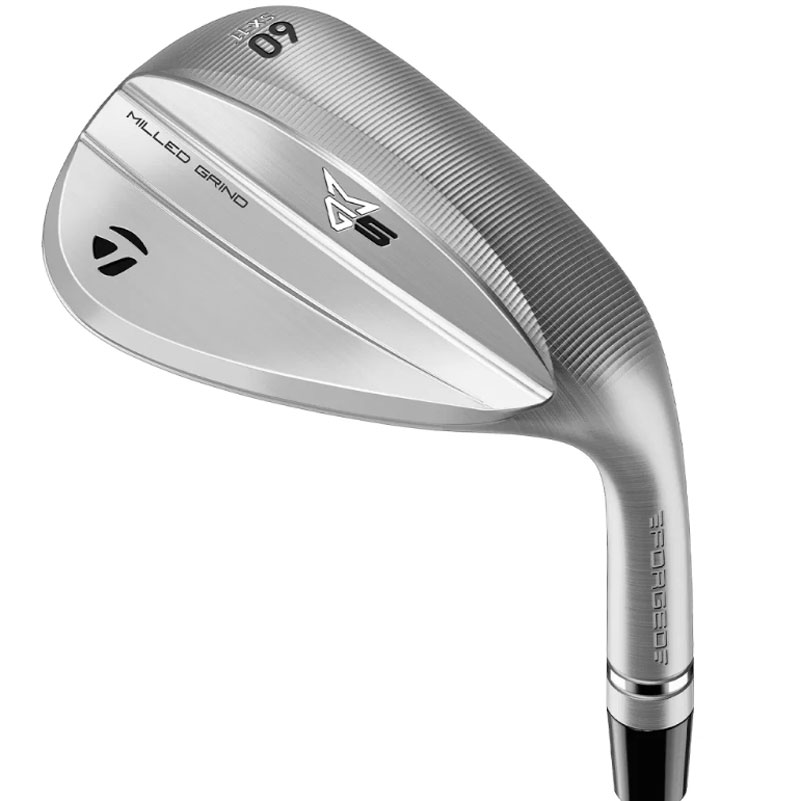
A wedge that combines beautiful looks with fabulous feel and excellent spin levels thanks to the new groove pattern. Six different grind options means every player can get the right fit with their wedges.
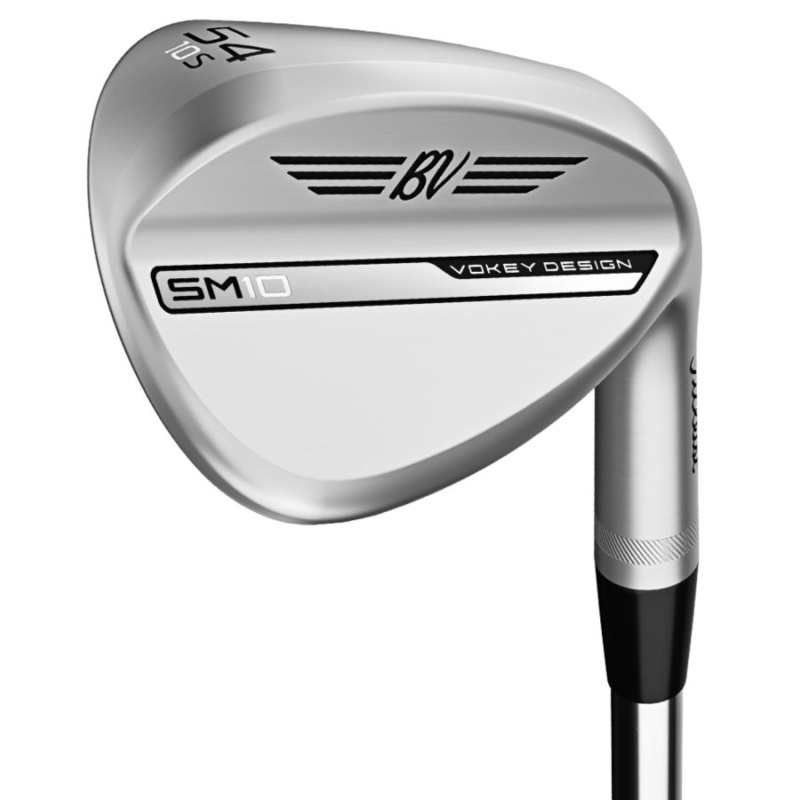
Subtle yet effective changes have been made to the Vokey SM10 wedge over the previous model. The more centrally placed CG, higher spin and lower launch, all enhance the predictability and control with this wedge.
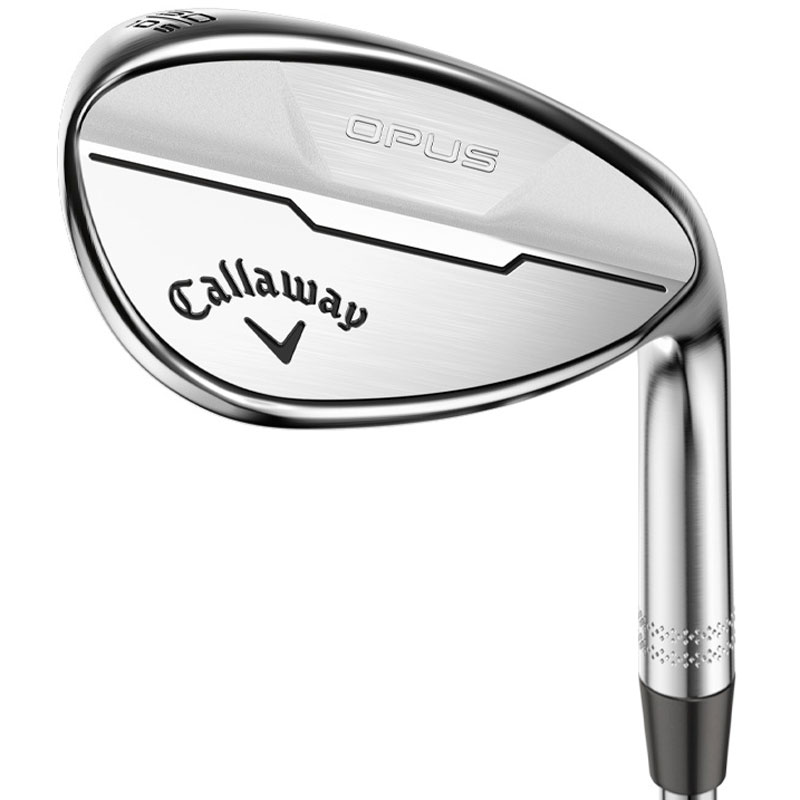
The new Opus wedges from Callaway are the perfect combination of performance and aesthetics. The Opus delivers extreme spin and control from the rough and difficult lies too.
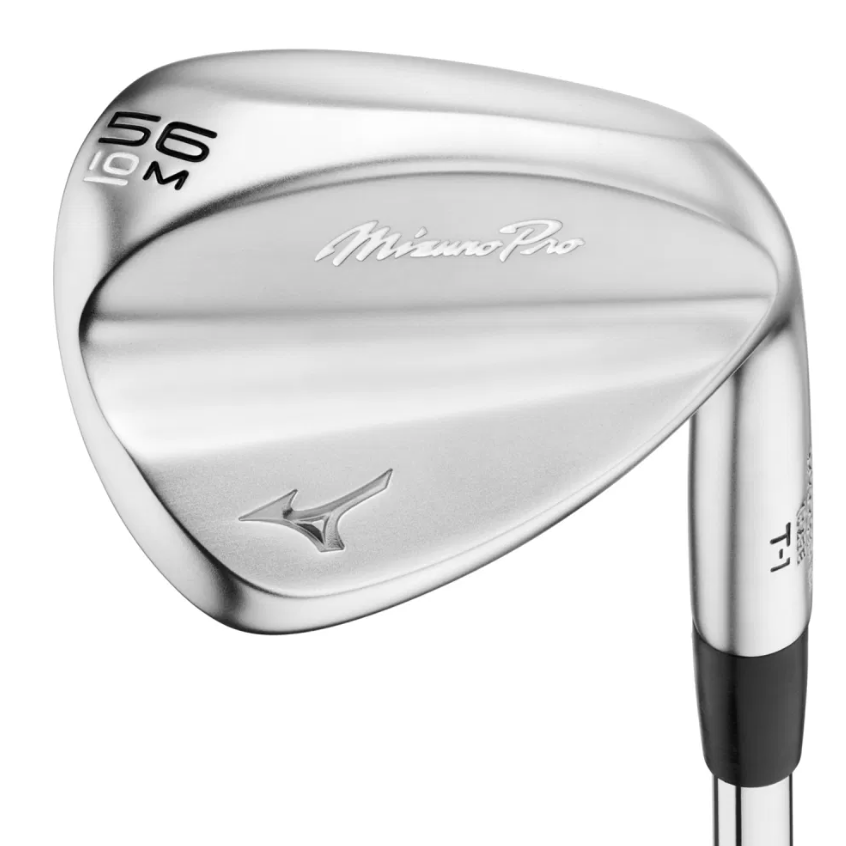
Mizuno deliver some of the prettiest golf clubs on the market and the Pro T-1 is an example of that - These are wedges designed for the more talented golfers who seek soft feel and play in a lot in both wet and dry conditions.
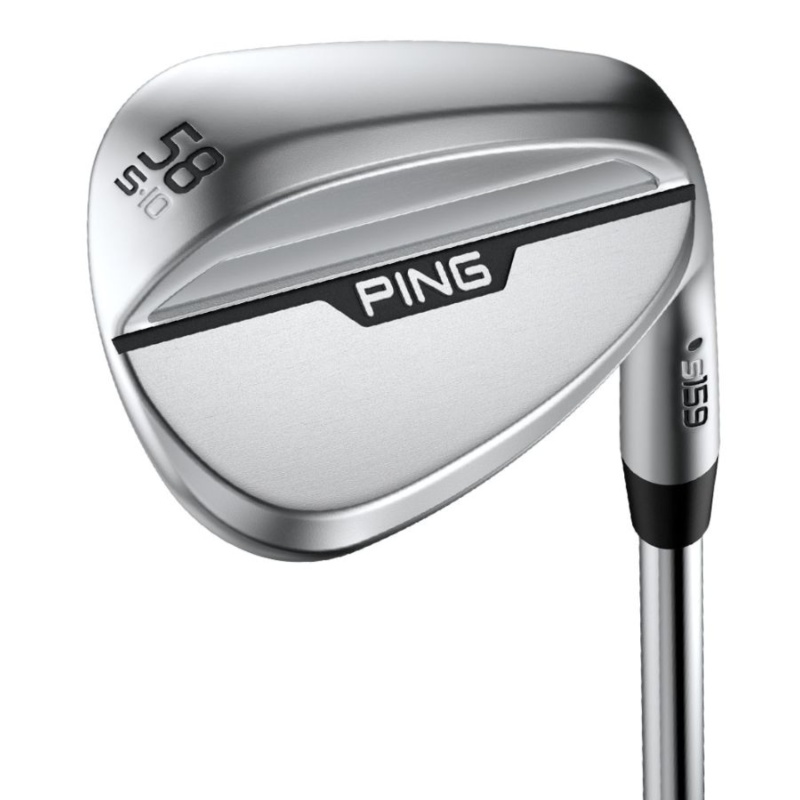
The Ping S159 wedges look as good as any other on the market and have the performance to match. The spin produced when chipping and pitching was exceptional and they also produced a strong consistent ball flight when firing from a little further out.
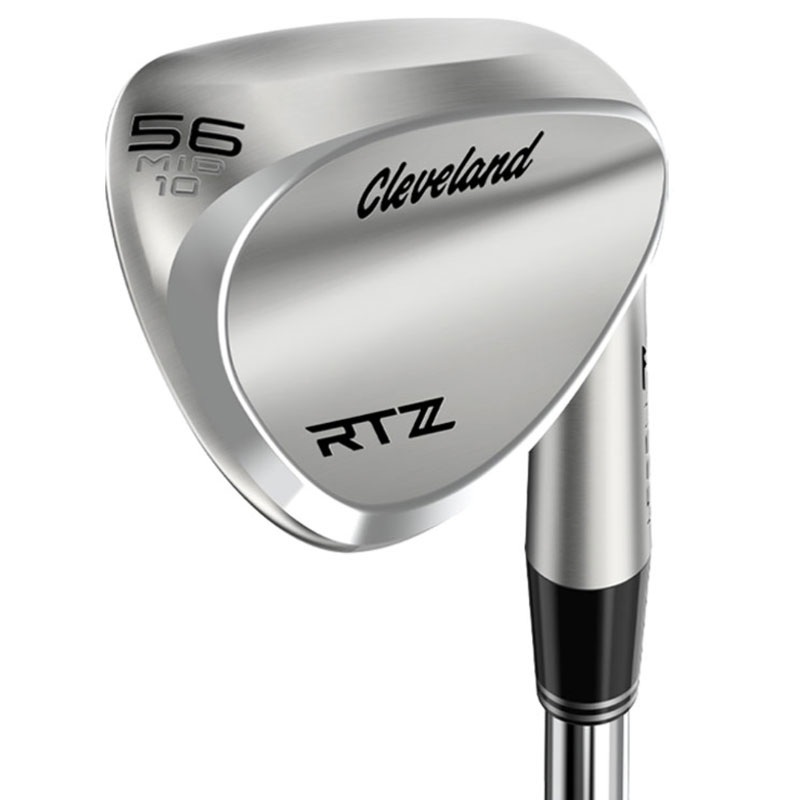
A wedge that delivers a clean, classy and classic look but also delivers in performance. Better suited for the more competent ball strikers, there are 4 grind options which offer golfers plenty of options based on their technique and the ground conditions they're used to.
Load the next 4 models
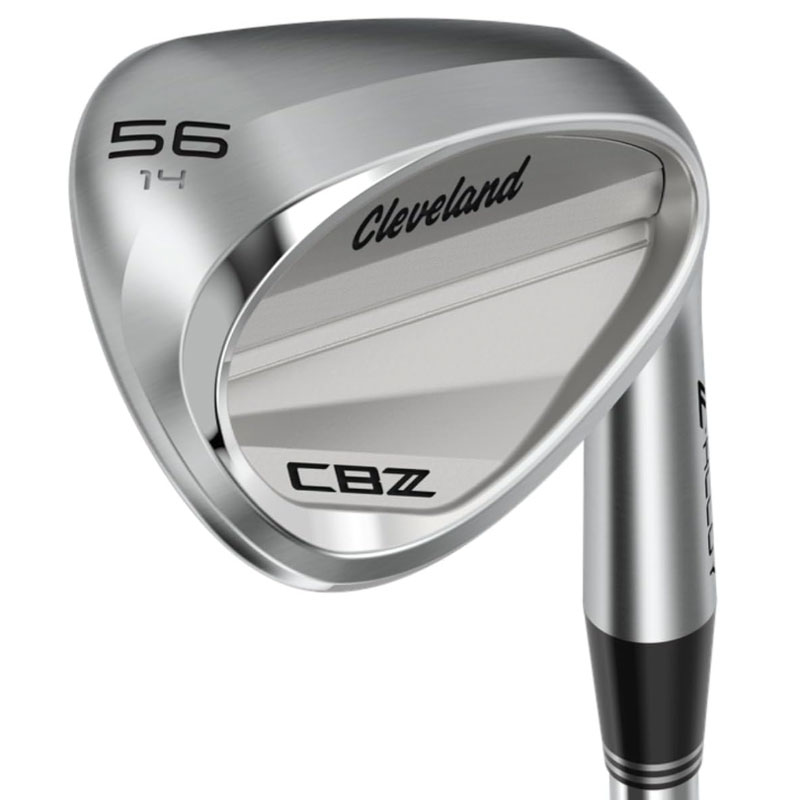
The CBZ wedges are an excellent option for players who lack confidence with their short game and require a little more assistance without sacrificing feel and spin performance. Extra confidence is delivered via the larger head and wider sole.
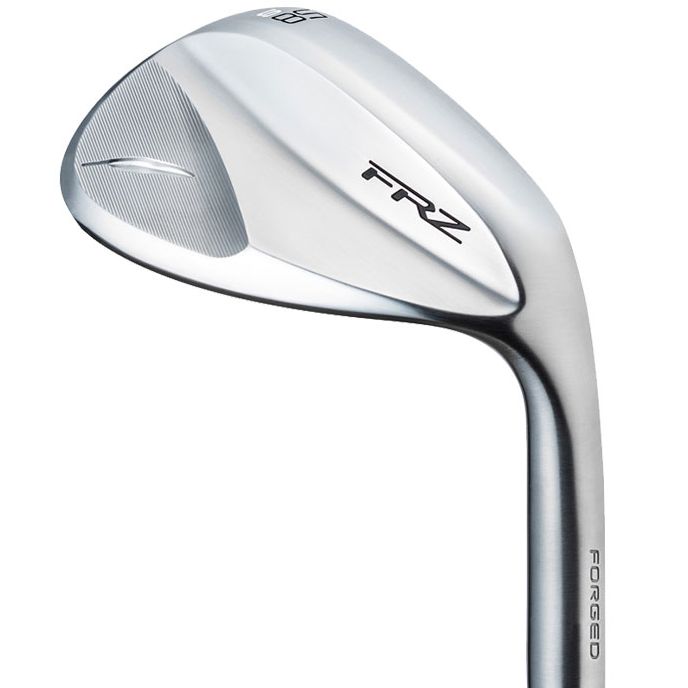
Beautiful looks are matched with top notch performance with unrivaled spin and a buttery soft feel. Available in two color finishes and multiple grind and loft options, golfers can truly customize these wedges for their game.
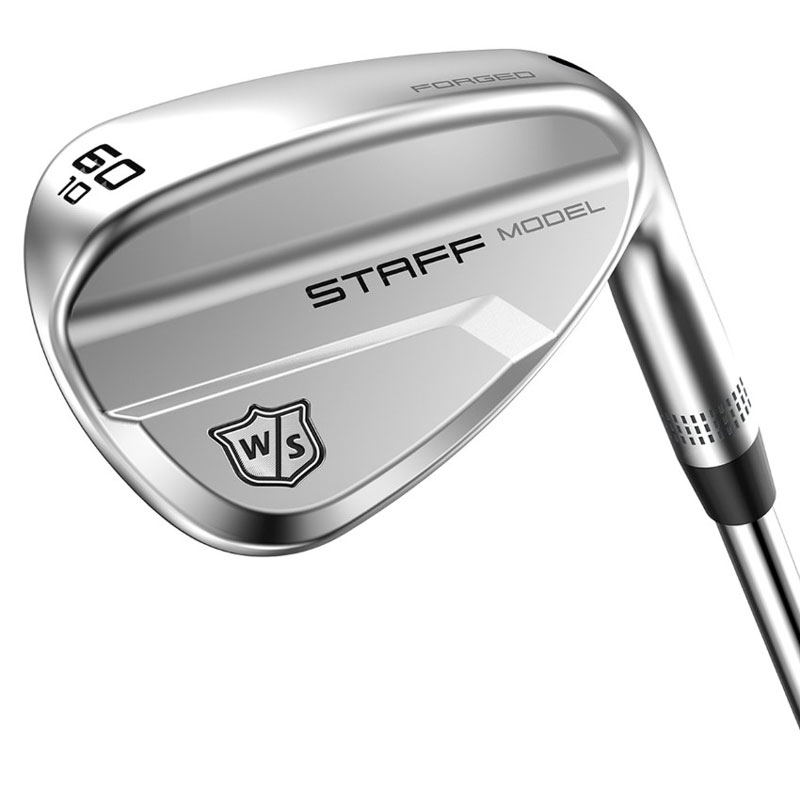
The Wilson Staff Model wedge looks very classic behind the ball and delivers a lovely soft feel at impact. It was stable and went through the turf nicely on full shots and offered a good amount of versatility and finesse for an affordable price.
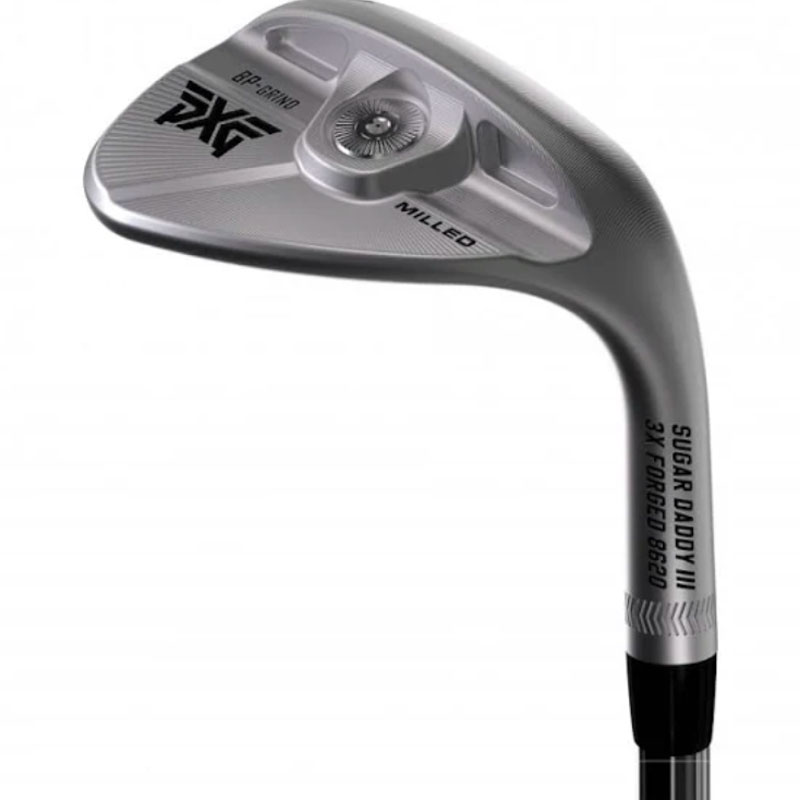
PXG deliver another high performing wedge that builds on the success of previous iterations. A more classic look will be welcomed by traditionalists whilst a beautifully soft feel and precision weighting technology delivers excellent feel and versatility.
Best Lob Wedges
Top pick
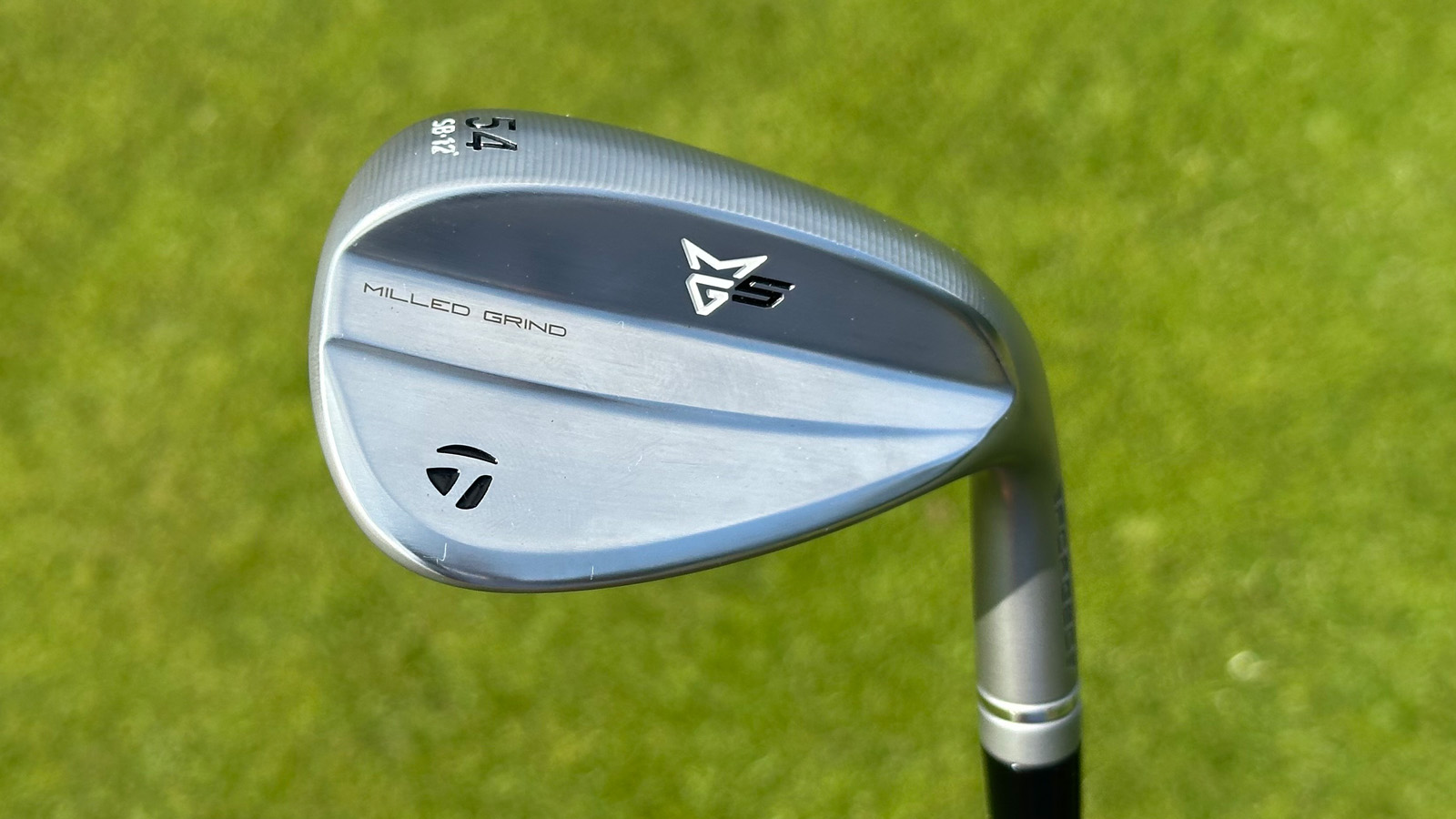
Specifications
Reasons to buy
Reasons to avoid
Our top pick goes to the impressive MG5 wedges from TaylorMade for a number of reasons - a lovely soft feel, a broad range of grind options, a new groove pattern that increases spin and control as well as a visual package comparable to anything else in this guide.
While I loved the TaylorMade MG4 wedges, I was hoping the shape of the MG5 wedges would be different, specifically the leading edge being more rounded. I'm happy to report that this is indeed the case, with the leading edge now sitting beautifully on the ground behind the ball. It helps sell the look as though I can slide the club under the ball, whether I’m opening or closing the face. This curvature is also replicated on the top line, which now flows much better into the hosel.
TaylorMade have softened the face which helps the ball stay on the face longer, which helped improve my distance control when chipping and pitching. The soft face is complimented by new Saw-Milled grooves, which push the groove design as close as possible to their legal limit. These grooves have steeper walls and sharper radii to help grip the ball and produce high levels of spin. While I couldn’t recommend any more for any golfer to try and test these wedges in the higher lofts, I do feel as though mid-high handicapper golfers would benefit from a more forgiving wedge in a 52° or 50° due to the bladed nature of these wedges.
- Read our full TaylorMade MG5 Wedge Review
Most used on tour
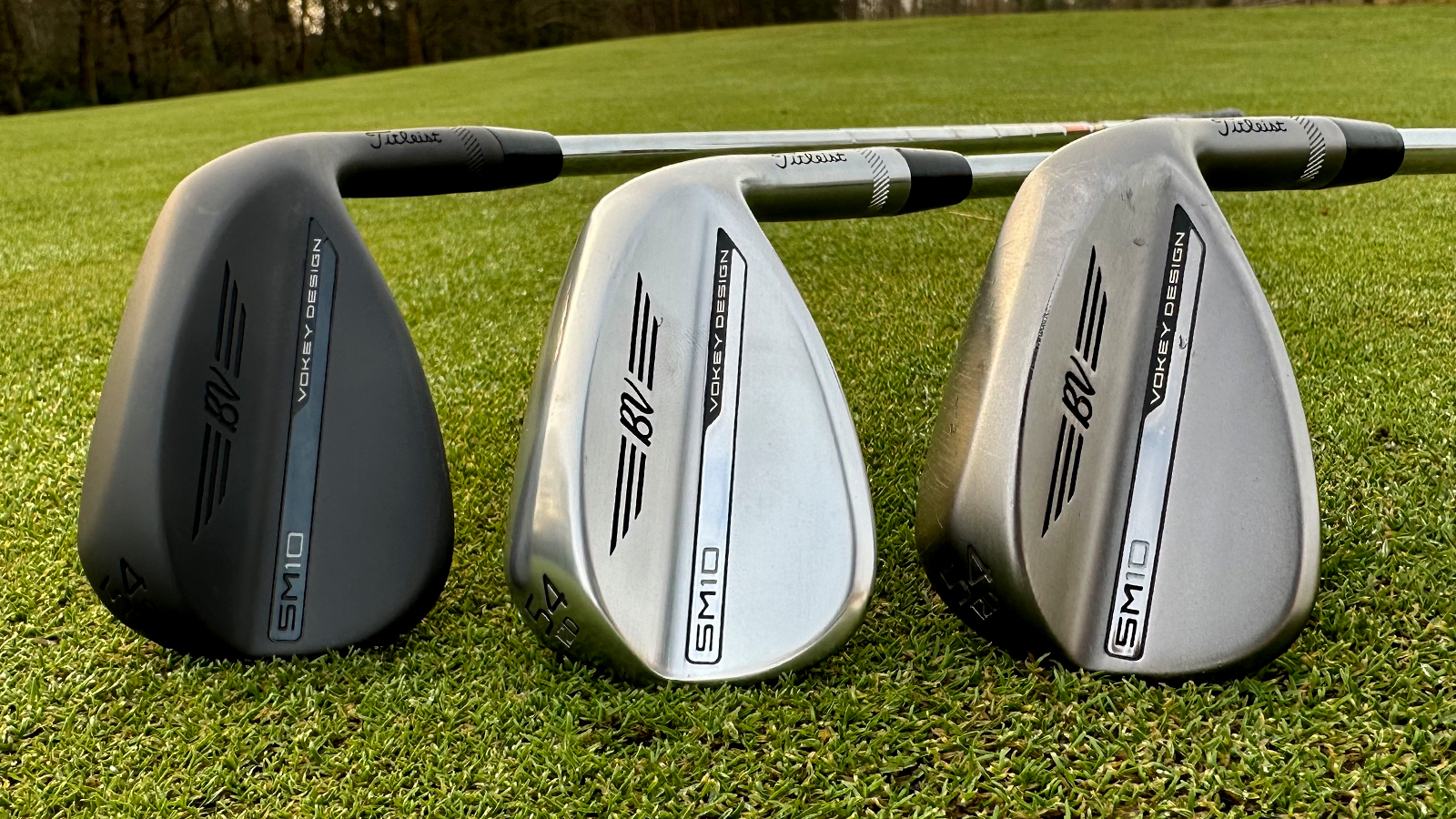
Specifications
Reasons to buy
Reasons to avoid
Vokey wedges have been among the best models in golf for many years now and I am pleased to acknowledge that the SM10's continue this theme. Although the changes made, aesthetically, have been fairly subtle, Titleist have introduced new design benefits like a more centrally placed CG, which has been shifted forward and further from the heel. In my testing, this translated to lower launch and higher spin numbers, all of which help to hone gameplay and precision.
On the lower lofts, from 46° through to 52°, I noticed a smaller head shape compared to the higher lofted options available. The higher lofted options have less of a straight leading edge than lower lofts, but the marginally bigger heads will inspire confidence for players standing over tricky chips from difficult positions or bare lies when a lob wedge is forced into their hands.
The added spin I experienced in SM10 is likely down to individually cut TX9 grooves, which differ based on the loft or finish of the wedge. There is also a micro-texture between the grooves which helps further create more spin, and the face gets a heat treatment to firm it up for more durability as well. Time will tell on my testing on this front, but overall the Titleist SM10 wedges have definitely progressed versus the SM9 wedges
- Read our full Titleist Vokey SM10 Wedge Review
Best for lower flight
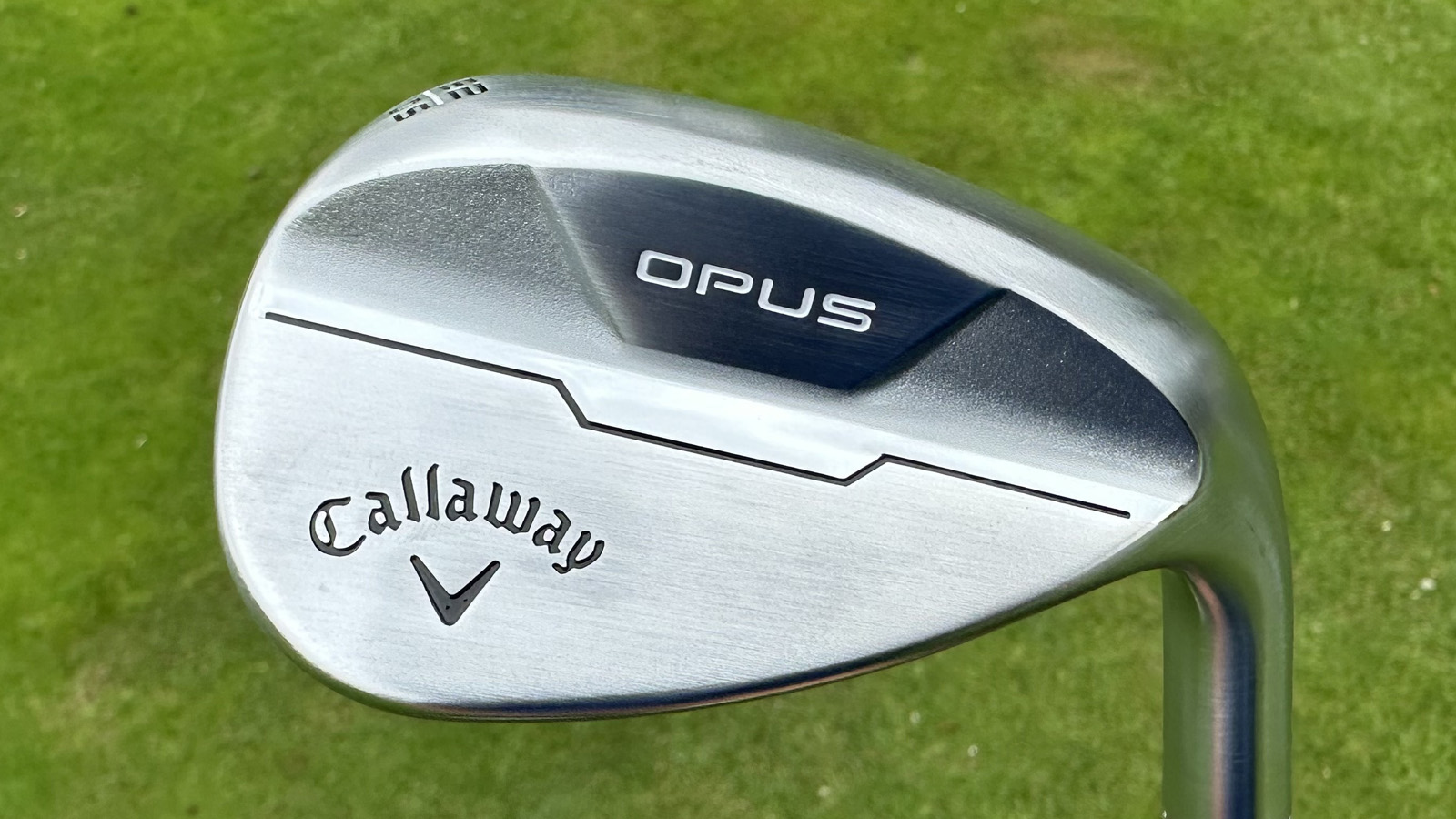
Specifications
Reasons to buy
Reasons to avoid
The Opus wedges are being called the most-tour validated wedges in Callaway's history by the brand itself. Of course, we were eager to get our hands on these beautiful new wedges and put them to the test...
Straight away, we were blown away by the aesthetics—they just look awesome. We weren't particularly fond of the shaping or the design of the Jaws Raw wedges so we elated to see Callaway revert back to a more classic looking bladed wedge. The design is based completely on tour-player feedback. The result is a higher toe peak and radius on the leading edge.
The Opus also features Spin Gen Face Technology— a combination of three factors to enhance spin and control. Along with a couple of extra grooves on the face, there are diagonal grooves between the main grooves for more friction when looking to cut across the ball. Plus, there's an aggressive face blast has been used for extra bite on shorter chip and pitch shots.
The Opus performed exceptionally well when coming from the rough. It produced remarkable levels of spin and we saw the ball check up lots when hitting shots from thick, buried lies.
- Read our full Callaway Opus Wedge Review
Best looking
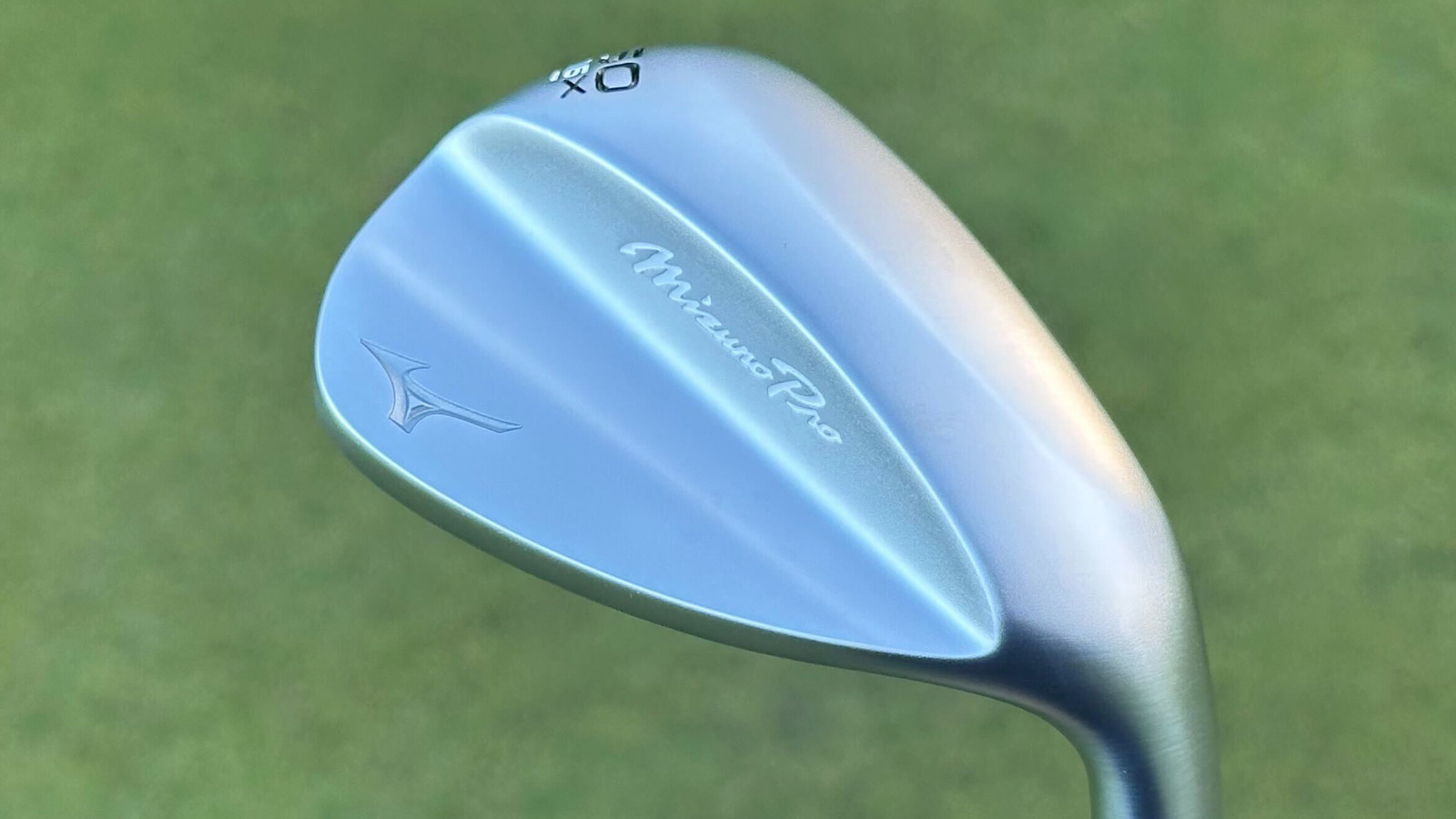
Specifications
Reasons to buy
Reasons to avoid
If a pretty-looking wedge is on your radar, may we suggest the Mizuno Pro T-1? If you have even an entry-level knowledge of Mizuno golf clubs, you'll not be surprised to see one of their wedges earn the best looking label here. The Pro T-1 wedge offers up a fairly compact, teardrop head shape that boasts so much shelf appeal both in hand and behind the ball. While I’m a massive fan of the soft white satin finish, there are two other finishes to choose from for those who want to add a bit of color to their bag.
In terms of performance, these are definitely wedges designed for the more competent ball striker. Due to its bladed nature, it's not one of the most forgiving wedges on the market and I really noticed a drop off in ball speed when not striking the center of the face, so this is something to consider if you regularly hit full shots with your wedges.
Mizuno has introduced its new Quad Cut+ grooves and Hydroflow microgrooves on these wedges, which sees a tighter groove pattern on the face alongside technology that helps control moisture levels and therefore spin generation. This versatility means these wedges perform really well in cold, wet conditions as they would in warm, firm conditions come summer time which is something very valuable to me as someone who plays in the UK.
- Read our full Mizuno Pro T-1 Wedge Review
Most underrated
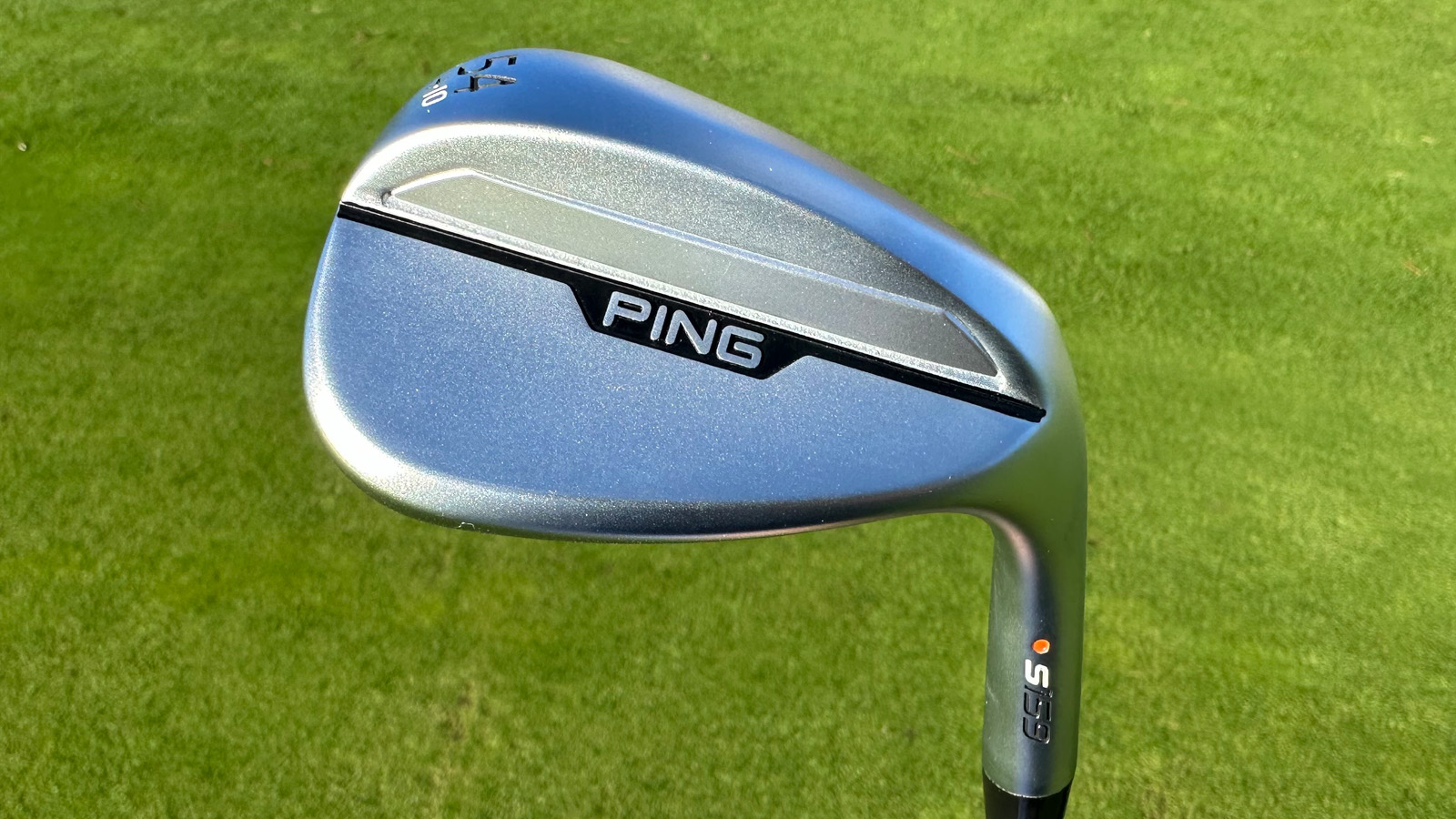
Specifications
Reasons to buy
Reasons to avoid
I really liked the simple design of the Ping S159 wedge. The topline of the wedge is both slim and compact, but the overall shape of the wedge is slightly bigger than rival lob wedges on the market. The black banner on the rear highlights the classic Ping logo and there is a subtle ‘S159’ stamp down on the hosel. Not only do they look good in the bag, but also down behind the ball.
I became even more impressed out on the course. The feel, particularly with fuller shots, was soft and despite a vibration dampening slot placed on the back of the head, these wedges offered plenty of feedback - something nearly every golfer will love. Additionally the wedges produced a ludicrous amount of spin when chipping and pitching. In fact these wedges are easily some of the best wedges for chipping I have tested of late, allowing me to predict exactly how my ball was going to react when chipping and pitching.
Overall they may not provide the out and out forgiveness from other models in this list, they will suit low to mid-handicap players easily - those looking for a classic looking wedge with the addition of some of the latest technology to help with performance.
- Read our full Ping S159 Wedge Review
Best classic design
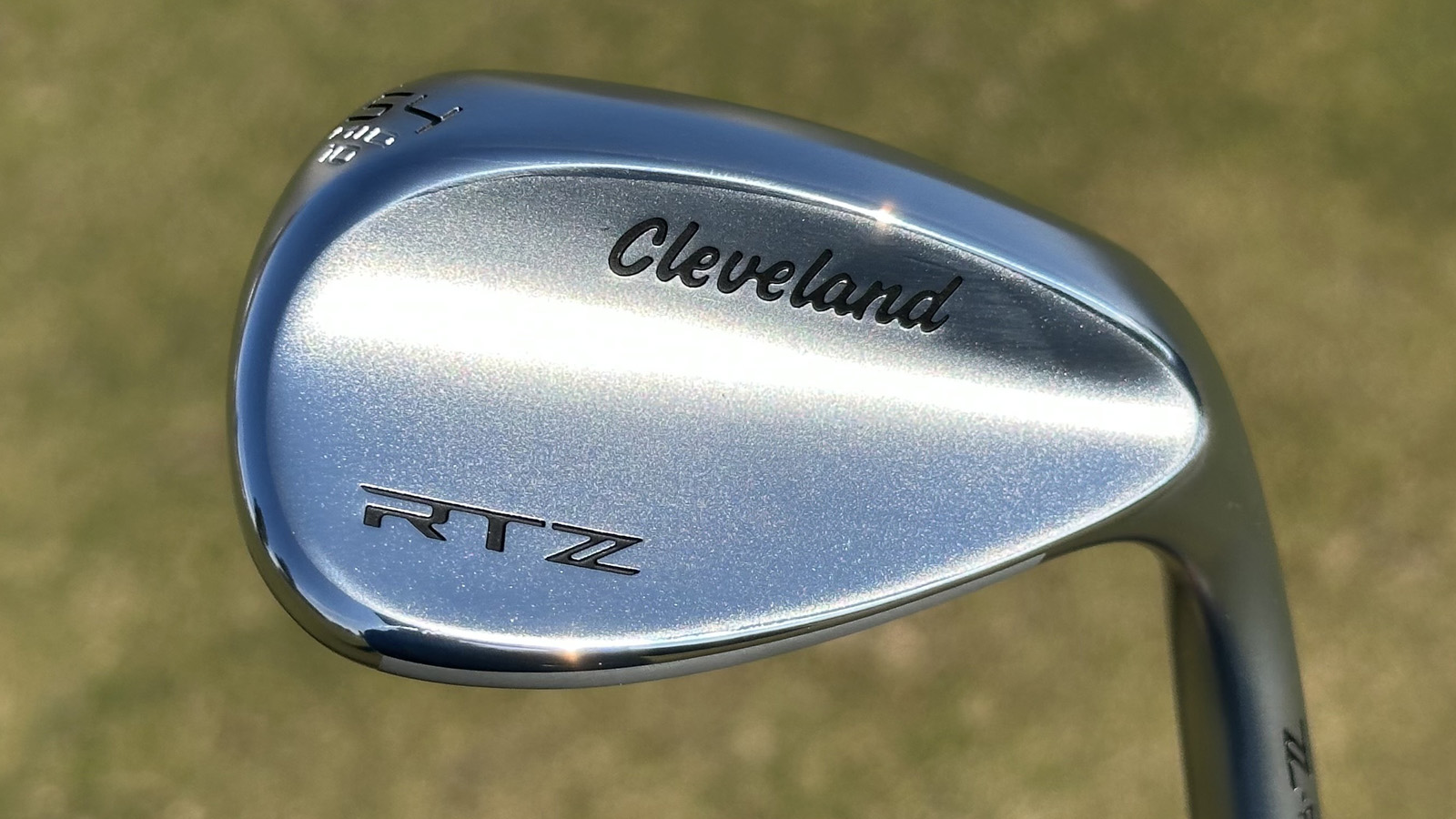
Specifications
Reasons to buy
Reasons to avoid
Some players want as simplistic a look as possible when it comes to their wedges - nothing fancy, just a plain but sleek look both in the bag and behind the ball. The RTZ wedges from Cleveland deliver this in a compact look that will prove popular for the more advanced players.
Down in the address position, the RTZ wedges boast a traditional profile, one that is fairly compact and rounded. The grooves on the face contrast against the milling on the toe and heel to frame the ball exceptionally well, but if you’re looking for a more forgiving image down at address, the RTZ wedges are available in a new ‘Adapt’ grind which give the user plenty of versatility.
Z-Alloy steel construction of these wedges is a wonderful sensation when you hit a shot. The ball feels like it stays on the face longer, allowing for optimal levels of control. This shone through on mid range pitch shots in particular, with the Hydrazip and Ultizip tech in the face working overtime to enhance that feeling of control.
- Read our full Cleveland RTZ Wedge Review
Best for mid-handicappers
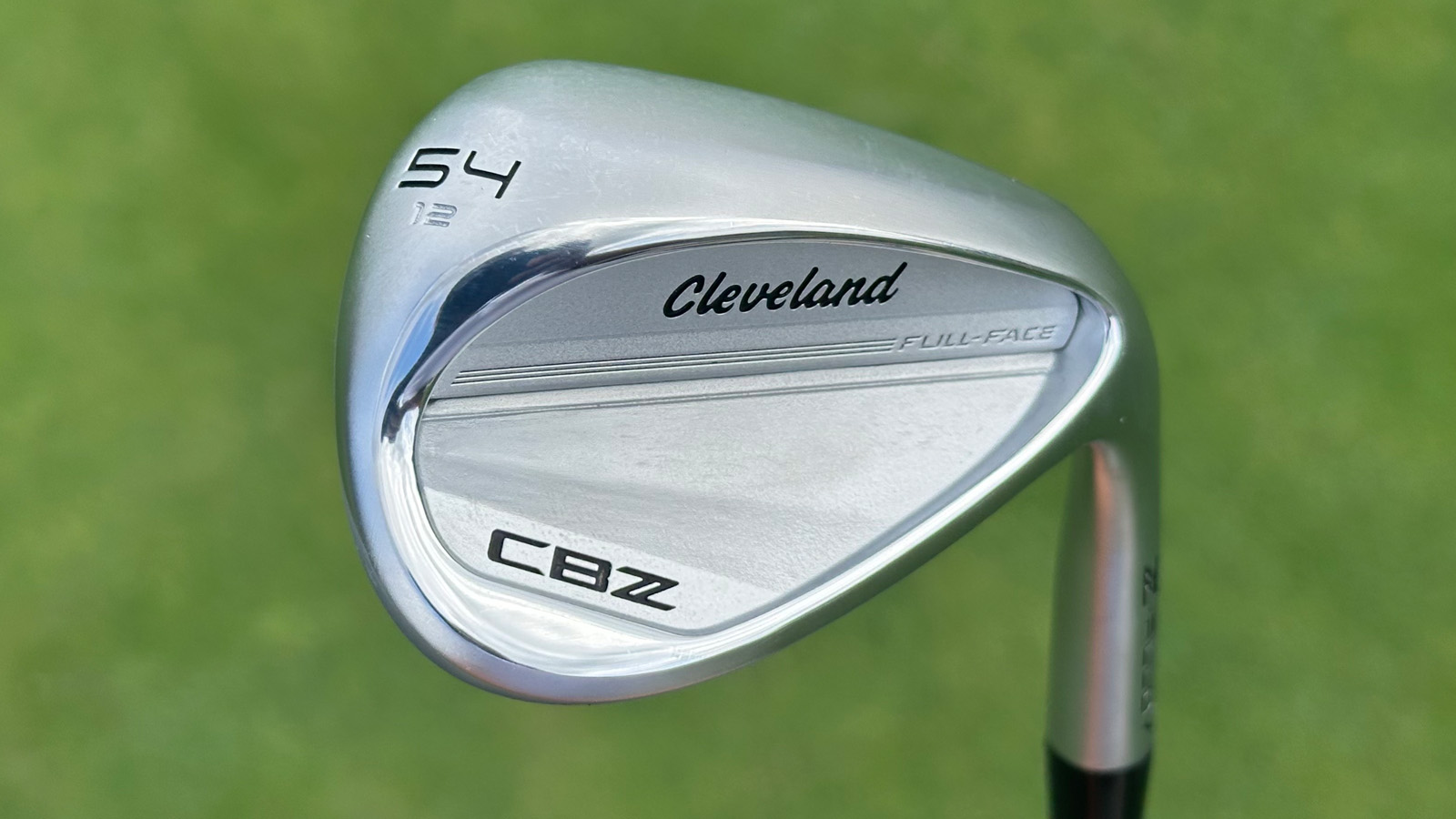
Specifications
Reasons to buy
Reasons to avoid
The CBZ wedges are all about forgiveness. The larger, rounded profile of the Cleveland CBZ will allow even those lacking confidence to feel good when laying the head behind the ball around the greens.
People think there is a trade off when opting for forgiving wedges, assuming you are sacrificing performance in return. Although I did find it a little harder to slide the club under the ball on firmer turf, I still felt as though I could play some more creative shots around the green thanks to the slightly rounded leading edge. Throughout my testing, the CBZ wedge proved to offer the exceptional feel you would expect from a premium bladed wedge, but with the ease and forgiveness of some of the best wedges for mid handicappers.
Overall, there is very little to fault in these wedges. It has every option covered and the balance, bounce and grip means it is one of the best Cleveland wedges on the market.
- Read our full Cleveland CBZ Wedge Review
Best for spin
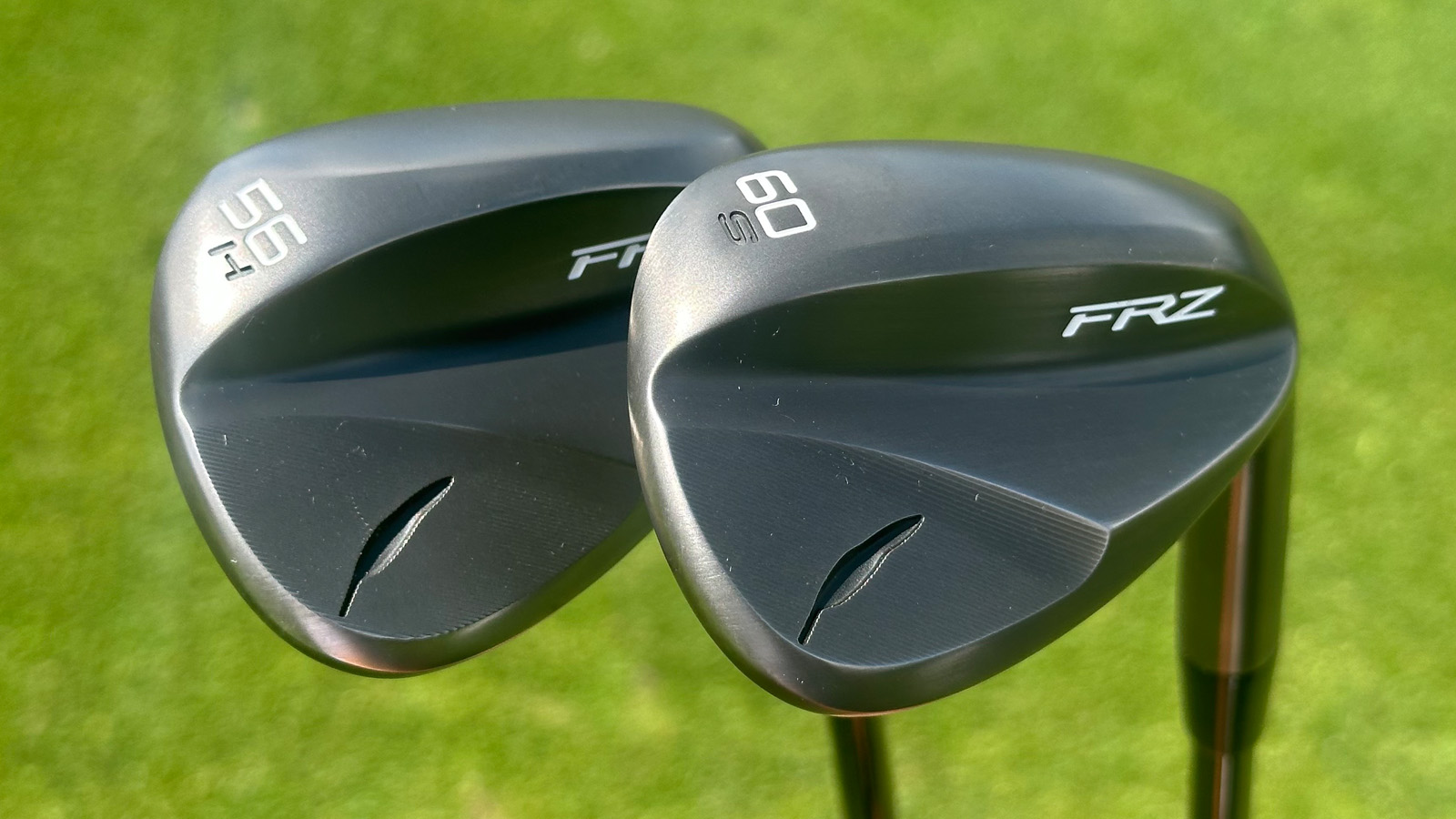
Specifications
Reasons to buy
Reasons to avoid
If you're unfamiliar with Fourteen, I understand. The Japanese company first released wedges 22 years ago and quickly became the most used wedges on the Japan PGA Tour, after testing it wasn't difficult to understand why.
Beginning with looks, I'll grade them an A+. They deliver a very slick, clean look coupled with 3 great finishes - I personally couldn't resist the smoky black finish - something I think just adds to the premium appeal of these wedges. The CG of these wedges has been pushed back to allow the gear effect to help deliver the most amount of spin possible. While I did feel as though these wedges offered extremely high levels of spin, I wouldn’t say I noticed it dramatically fall or rise by hitting different shots with an open or closed face. The spin created from what I would consider slightly poor lies, balls sat down in the rough, was also really impressive.
The most competent player is better suited to these wedges compared to mid or high handicappers, especially those who can dial in spin control.
- Read our full Fourteen FRZ Wedge Review
Best value
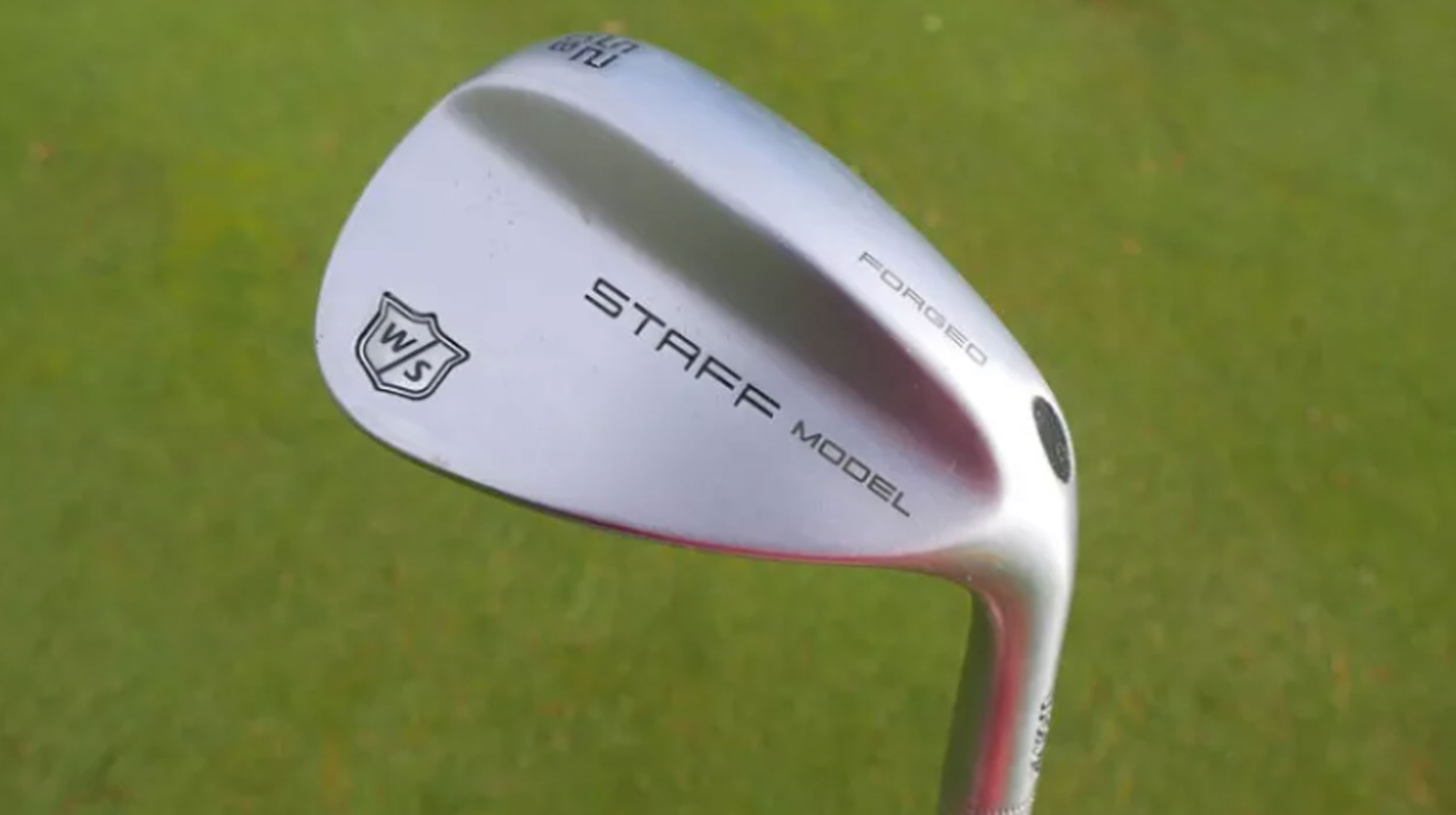
Specifications
Reasons to buy
Reasons to avoid
Wilson may not be the first brand that comes to mind when we talk about the best golf wedges, but they offer excellent value in all areas of the golf bag. As a result, i've opted for the Staff Model here for our title of best value as I was extremely impressed with how it delivers such a great combination of look and feel to gameplay, also helping to increase confidence at address. What I found was that, at impact, this lob wedge is extremely stable and forgiving, which makes it a good choice for players of a diverse range, from newer golfers to more experienced players.
A lack of bounce and grind options is a little disappointing, especially in comparison to the likes of the Vokey SM10s, but this is still a wedge I really liked in testing.
- Read our full Wilson Staff Model Wedge Review
Best for soft feel
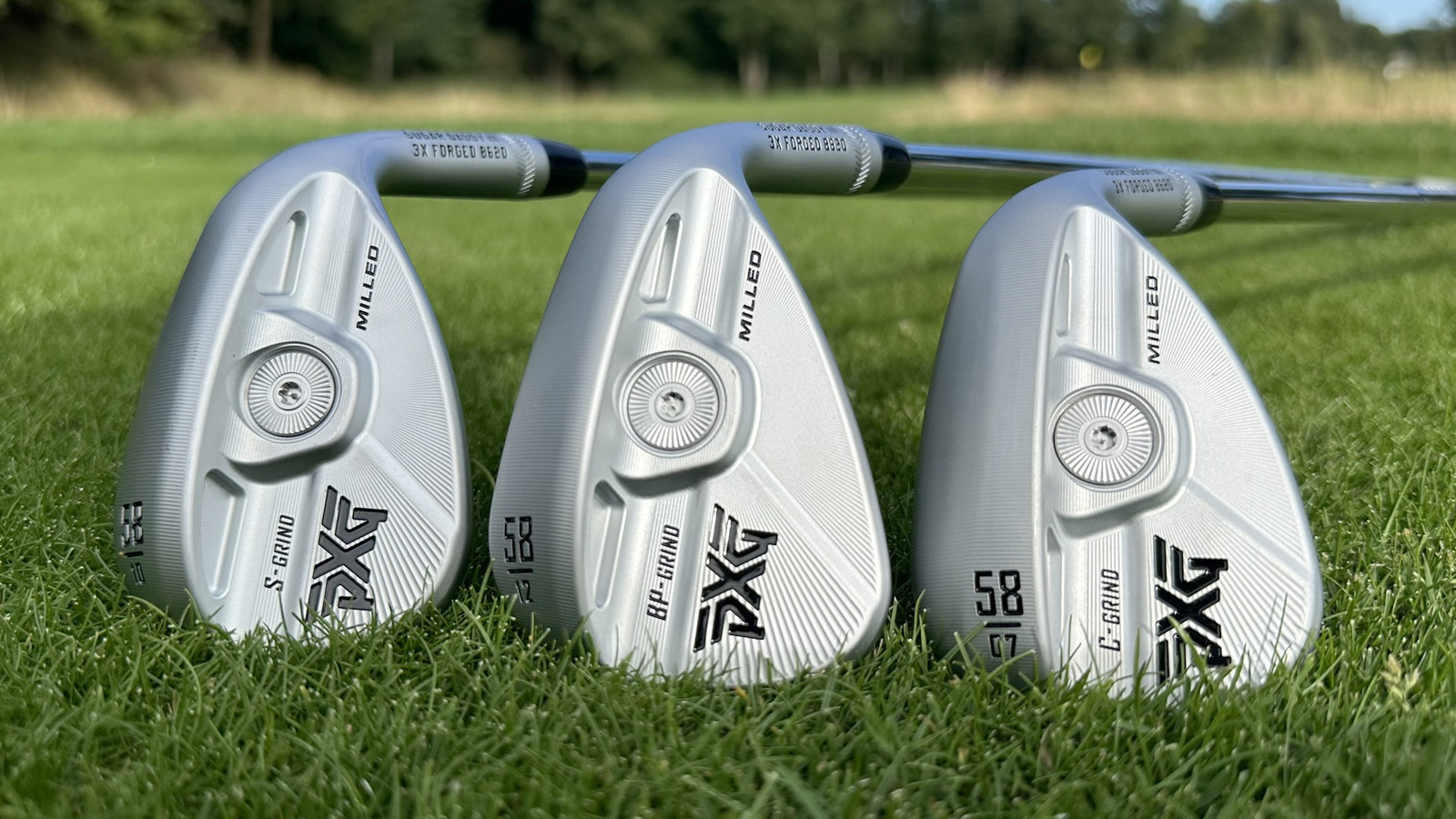
Specifications
Reasons to buy
Reasons to avoid
The Sugar Daddy II wedges were an improvement on the original Sugar Daddy wedges from PXG and the third iteration of these wedges has given us even more improvements. The premium looks on offer are a little held back compared to the more outlandish designs PXG have offered in previous years which is welcomed.
We were very impressed by the versatility on offer from these wedges - performance was consistent from both the fairway and the rough and when we hit shots up to 70 yards from both these areas of the course we saw the ball reacting similarly when hitting the green.
Thanks to the extensive forging and CNC milling these wedges undertake, they not only look superb but feel incredibly soft and smooth through impact. It gives better players a platform to seriously dial in distance control but they're also forgiving enough to cater for mid-to-high handicappers as well.
- Read our full PXG Sugar Daddy III Wedge
How we test

Sam has worked in the golf industry for 14 years in addition to experience playing on both the EuroPro Tour and Clutch Pro Tour, offering advice on equipment to all levels of golfers. Sam heads up our review content relating to fairway woods, hybrids, wedges and golf balls.
When it comes to wedges, we take the testing process very seriously. Whether we are sent a product or buy it ourselves, we put everything through its paces to ensure we can provide thorough and reliable advice. Specifically, wedge testing is headed up by Sam De'Ath, a golfer with many years experience of testing golf equipment, and he has also competed on the EuroPro Tour and Clutch Pro Tours. Additionally every member of the Golf Monthly team is an avid golfer and as such, knows what does and doesn't make for a good wedge.
We pride ourselves in our reviews because they are made for golfers, by golfers. With decades of experience testing golf equipment, our process is built on this experience and genuine love for the game - meaning if a product is good or bad, we'll tell you in full honesty. There are no links to manufacturers, nor the opportunity for them to 'buy' a good review, we simply call it how we see it after testing each bit of equipment.
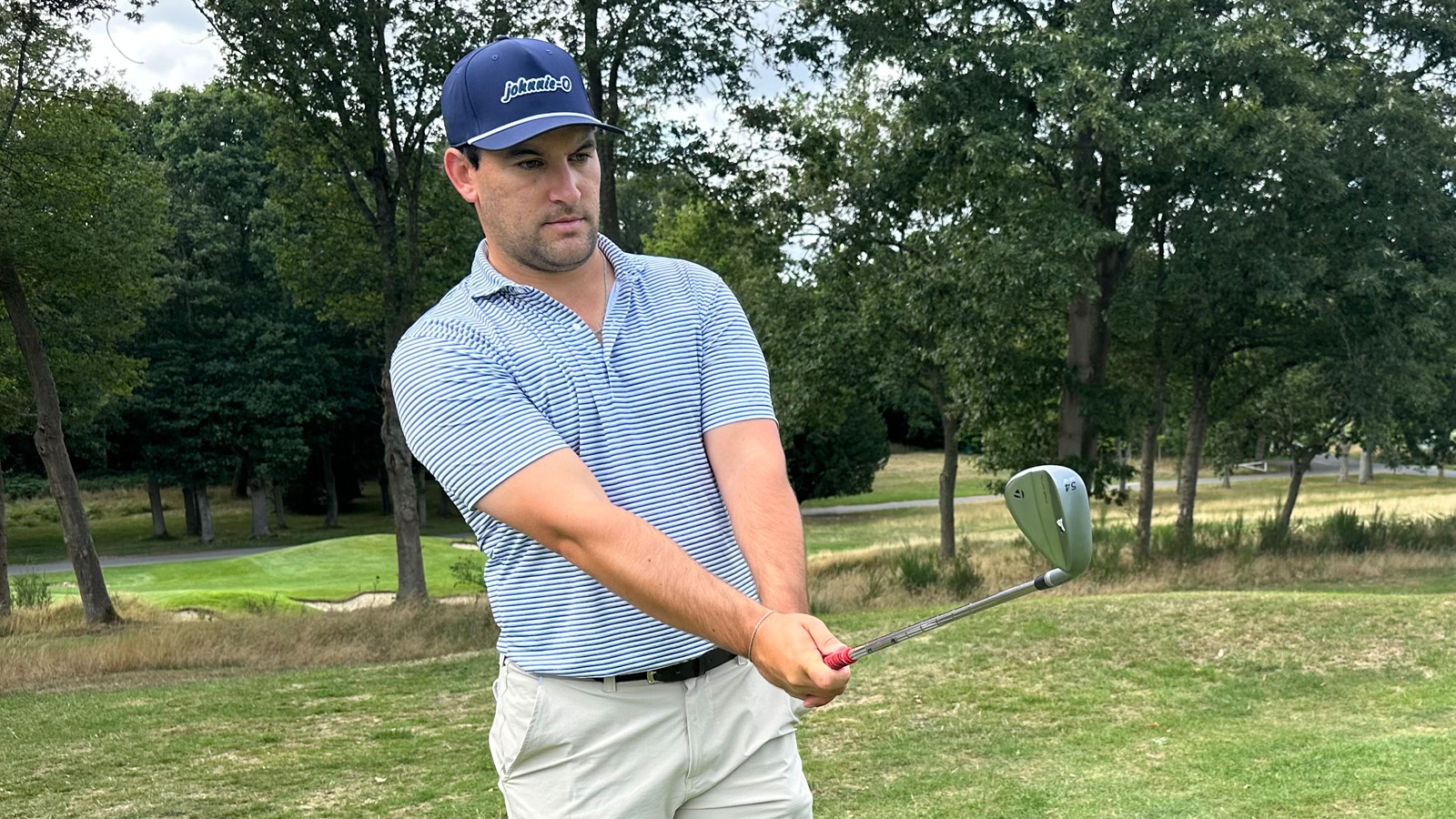
Sam testing the TaylorMade MG5 wedges on the golf course
As far as our methodology goes, we review all wedges properly, which means we have used each one across multiple rounds and in practice to assess every aspect of performance in all conditions. For example, if a brand claims its wedge is the ultimate bunker club, we will test that theory from any and all lies possible.
Specific to the best lob wedges, we tested every one thoroughly to assess the consistency when it came to spin, feel and distance control on offer. We were also keen to find out how easy it was to hit full shots with each model was and analyze differences in flight and dispersion.
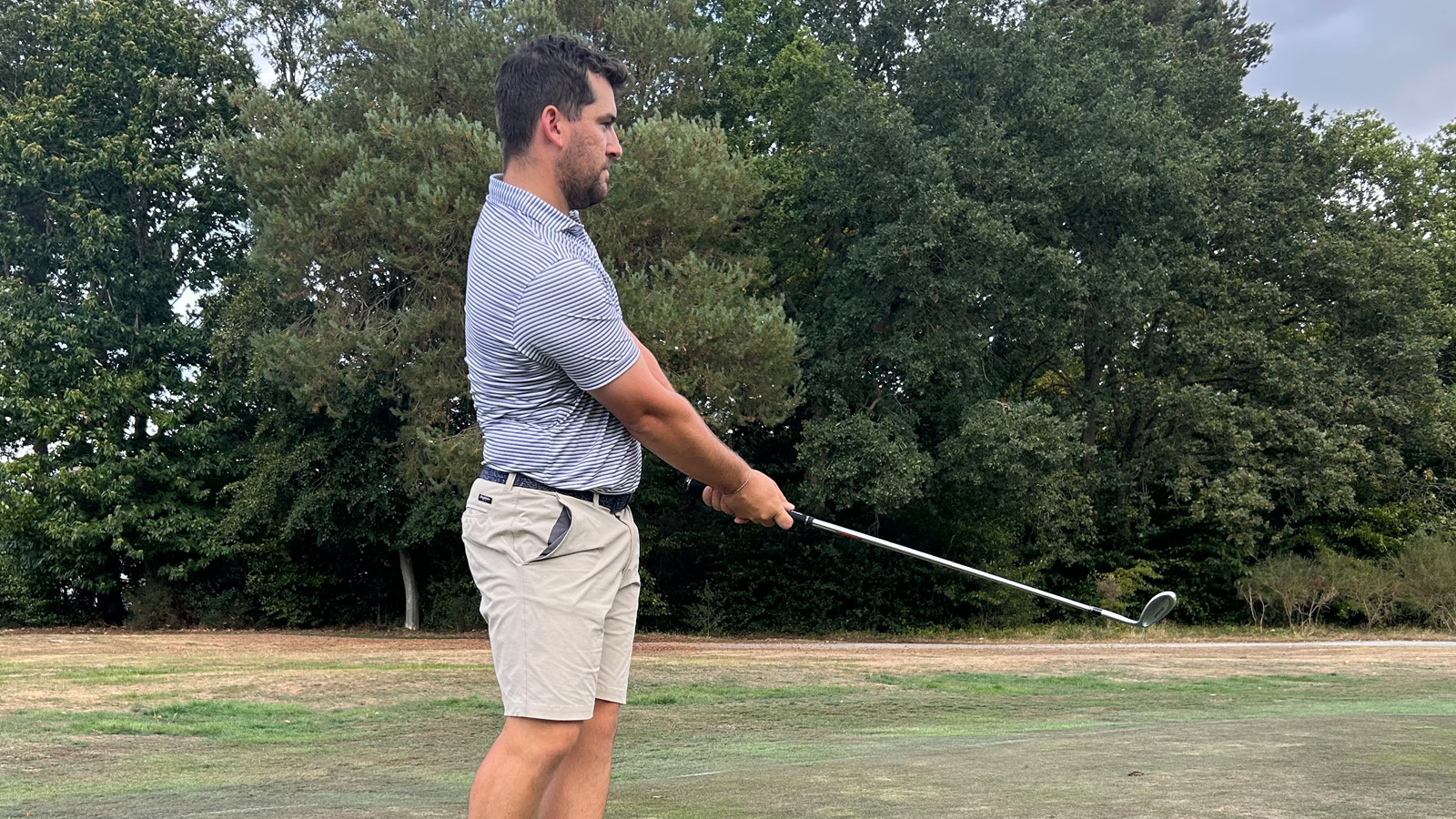
Sam testing the Cleveland CBZ wedge
What to consider when buying new wedges
As wedges are some of the most technical clubs in your bag, getting the right wedge for your swing and the kind of golf you want to play can be a tricky task. That's why we here at Golf Monthly always recommend anyone buying a new wedge or club attends a club fitting session, to get a club that is tailored to your needs as a golfer. But we also have a some helpful tips you should keep in mind when looking to get a new set of wedges.
1. Gapping
It's vitally important to fill yardage gaps in your golf bag. There is nothing worse than facing a yardage that you don't have a specific club for, so filling each gap will put you in the best place for success. If your pitching wedge flies 130 yards, it's crucial to get a wedge that can then fly 120 yards or so. Fill those gaps and shoot low scores, it's that simple.
2. Bounce
Low bounce wedges are more suited to hard fairways and tight lies, while high bounce wedges are better for softer ground conditions and bunkers. The most bounce you will ever see on a wedge is about 18°, but it can be as low as 2°. The type of bounce you opt for should largely depend on things like your normal angle of attack, the firmness of your fairways and the type of shots you like to hit around the greens.
3. Finish
Look good, feel good, play good. We're sure you've heard that expression before. If your wedge looks nice at address, that boosts your chances of hitting a good shot. The same work the other way - not liking the look of a club is a bad start to your relationship with it. Pick the right look and finish to set yourself up for success with your wedge game.
4. Grooves
While grooves are now tightly regulated and less spinny than they used to be, it is still well worth keeping up to date with the latest designs that now use new milling processes and groove shapes to help move water and dirt away from the ball at impact to create extra spin and improve control. Clubs with full face grooves can prove more forgiving and produce higher spin rates than those without full face grooves, so it's worth trying them all out to see what you like.
5. Forgiveness
Playability is a huge factor that any golfer needs to bear in mind when buying a new lob wedge. We all know how unforgiving wedges can be and how infuriating it can be to fluff your chip shot after playing a smashing drive right down the middle of the fairway.
Even some the professionals struggle with wedge shots around the green given how unforgiving they can be compared to other clubs in the golf bag. So for that reason, if you're less experienced, you want to need to sacrifice a bit of control in your wedge game to gain a little more consistency. And if you fall into that category of player, you may want to look out for wedges that come with a wider sole and a cavity-backed design.
For more advice on some of the best wedges on the market, visit our in-depth guides to the best pitching wedges, best sand wedges and best high-bounce wedges.
FAQ
What makes a good lob wedge?
A good lob wedge should inspire confidence at address, allow golfers to play an array of short-game shots, and produce plenty of spin. All of these things come down to personal preference so make sure and do some testing to find your ultimate lob wedge.
What is the best lob wedge degree?
The most traditional loft when it comes to lob wedges is 60° but that doesn't mean to say it's the best. Nowadays, brands manufacture lob wedges that range from 58° all the way through to 64°, meaning golfers have more options than ever. If you find yourself needing to play a lot of flop shots, you might find a model on the higher end of the loft scale would suit your game best.
What is the easiest 60-degree lob wedge to hit?
There aren't really any bad lob wedges made nowadays, meaning each model offers great forgiveness and consistency. However, lob wedges featuring a cavity-back design and a high MOI will generally be the easiest to hit.
Subscribe to the Golf Monthly newsletter to stay up to date with all the latest tour news, equipment news, reviews, head-to-heads and buyer’s guides from our team of experienced experts.

Sam has worked in the golf industry for 14 years, offering advice on equipment to all levels of golfers. Sam heads up any content around fairway woods, hybrids, wedges, putters, golf balls and Tour gear.
Sam graduated from Webber International University in 2017 with a BSc Marketing Management degree while playing collegiate golf. His experience of playing professionally on both the EuroPro Tour and Clutch Pro Tour, alongside his golf retail history, means Sam has extensive knowledge of golf equipment and what works for different types of golfers.
- Matt CradockStaff Writer
- Conor KeenanGear & Ecommerce Writer